Photo credits: Epix Publicity photo for Godfather of Harlem
Over 100 years ago today, a Black man was born in Charleston, South Carolina who would be known much later in history for his residence in a city, which was a breeding ground for excellence in Black America.
Over numerous decades in the 20th century, Harlem, New York City was a very special place for Black excellence in the U.S. The illustrious Harlem Renaissance of the 1920s produced some of Black America’s biggest stars of all time. Many of the first and best-ever who “did it for the culture” were doing it in Harlem during that time with their intellect, social influence, and artistic fervor.
However, the socially acceptable Black stars in the worlds of legitimate business, art, film, music, literature, and sports were not the only Black trailblazers who shined. In fact, throughout U.S. history, some of Black America’s most prominent larger-than-life figures amassed fortunes, which dwarfed what singers, dancers, or musicians were earning.
Hate it or love it, the stars have historically been bigger and have shined even brighter on the mean streets of Black America’s underworld. Harlem has often been the rule and not the exception when it comes to this harsh but inarguable reality. On October 31, 1905, Elsworth “Bumpy” Johnson (pictured left) was born in Charleston and grew to become one of those stars.
But Johnson’s meteoric underworld rises later in life on the streets of New York City earned him the infamous title of The Godfather of Harlem. Before there was Frank Matthews, Nicky Barnes, Frank Lucas, or even the legendary Pee Wee Kirkland, Bumpy Johnson was laying down the law as a legitimate Black American mob figure.
However, Johnson had to work his way up and he stumbled many times along the way. By the time he reached the age of 30, he had already spent 50 percent of his life behind bars. In Johnson’s first development phase in street life’s trivial confines, robbery, burglary, extortion, and dishonorably profiting off the prostitution of women did not get him too far.
But in a mixed stroke of irony and good fortune in his early 30s, it would be an older, more seasoned Caribbean-born woman who would school Johnson on how to make some real money on the streets of Harlem. This woman would also show Johnson how to score this trip to the underworld’s bank vault in a much more organized fashion. This smart, well-cultured, and powerful woman’s name was Stephanie St. Clair (aka Madam Queen).
St. Clair met Johnson in the early 1930s. He was broke, unemployed. He had just recently been released from prison again. Known as “The Queen of the Policy Paper,” St. Clair was a bonafide underworld boss. She had an impenetrable numbers-running operation. This made her very wealthy. However, she faced a serious threat from a hot-headed and dangerous Jewish mobster known as Dutch Shultz (born Arthur Flaggenheimer).
Needing a personal bodyguard who could blast fast and shoot first with the best of them, St. Clair helped Johnson get back on his feet. She brought him into her illegal gambling organization. Johnson quickly became a very feared enforcer who killed at will. When Shultz (a trigger-happy cash cow and pure psychopath) kept trying to extort and kill St. Clair, Johnson forged an alliance with the Italian mob, a group Shultz was also a threat to.
St. Clair preferred to run her organization quietly. She maintained her lean but lucrative socio-economic network without shedding any blood. She certainly did not believe in forking over any of her wealth to Shultz. All he wanted was a one-sided partnership that would weaken her. Johnson’s Italian mob ties (including his unlikely alliance with New York crime boss Salvatore “Lucky” Luciano) helped keep the Queen protected.
In a low-key supportive role, Johnson was said to have a hand in bringing about Shultz’s blood-soaked demise.
Johnson married a principled but understanding Black American lady named Mayme Hatcher in 1948. Hatcher was born in North Carolina in 1914 (other sources say 1915). She moved to New York in 1938 where she waited tables and would later become a hostess. Ten years later, she bumped into Johnson, who had just come out of serving a 10-year stint in prison.
The couple took to each other instantly and married three months later. Hatcher died in 2009. Before her death, she wrote an intriguing book about her life inside Black America’s mob while being married to one of its kings. Hatcher’s book is titled “Harlem Godfather: The Rap on My Husband, Ellsworth ‘Bumpy’ Johnson.”
With his renegade criminal background, philanthropy and love for flashy clothes and poetry, Johnson was a character that Hollywood would not deny later on in history. Among the films that have portrayed him include The Cotton Club (1994), The Hoodlum (1997), and American Gangster (2007).
On the small screen, Johnson is portrayed by Forest Whitaker (pictured right) in the 2019 series The Godfather of Harlem. In July of 1968, the real-life Johson died of a heart attack at the age of 62.
Reference: Editors, Biography.com. (2019 September 20) The Bumpy Johnson Biography Retrieved from https://www.biography.com/crime-figure/bumpy-johnson









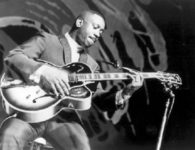

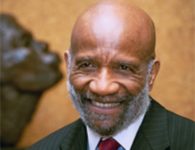
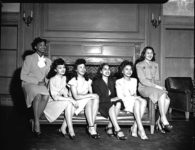
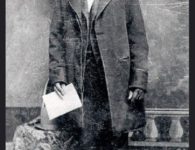
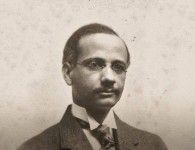


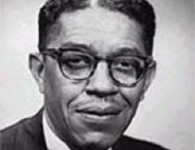

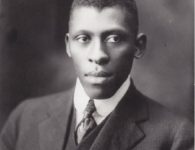

No comments